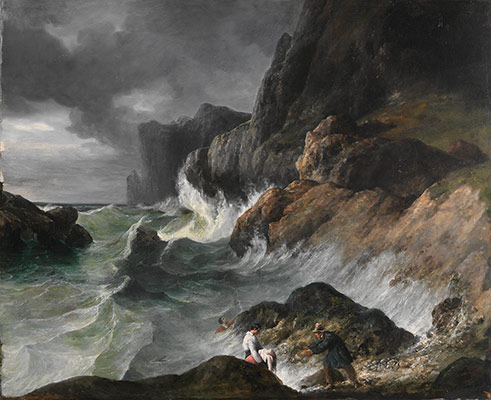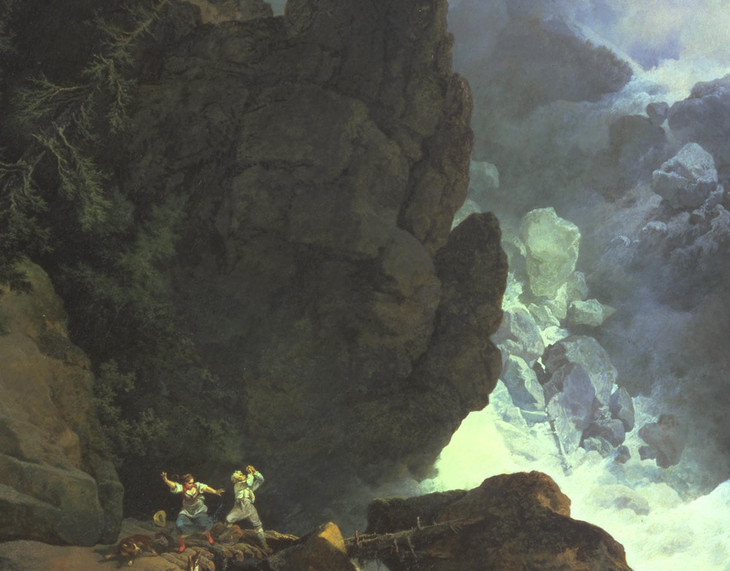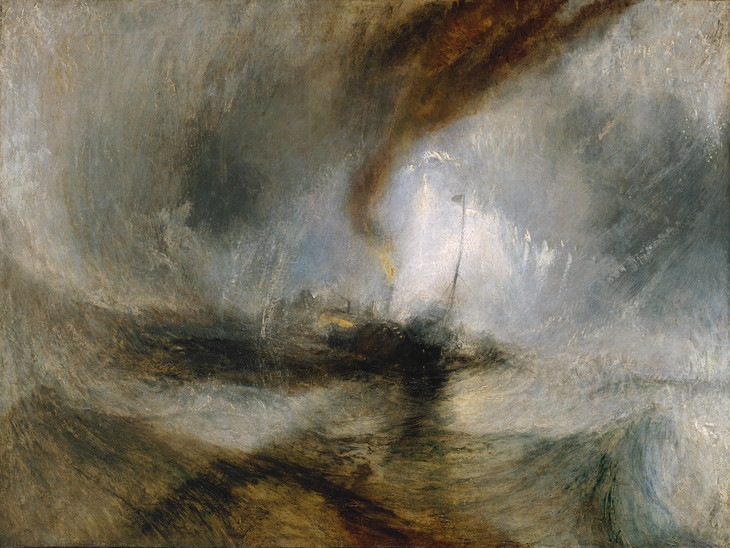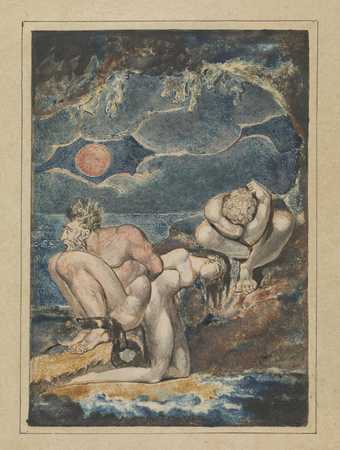What is the Sublime?
The theory of sublime art was put forward by Edmund Burke in A Philosophical Enquiry into the Origin of our Ideas of the Sublime and Beautiful published in 1757. He defined sublime art as art that refers to a greatness beyond all possibility of calculation, measurement or imitation. He wrote ‘whatever is in any sort terrible or is conversant about terrible objects or operates in a manner analogous to terror, is a source of the sublime’.

Department: European Paintings
Working Date: (1830)

An Avalanche in the Alps 1803 (detail)
Tate T00772
The Romantic sublime
Edmund Burke’s Philosophical Enquiry (1757) connected the sublime with experiences of awe, terror and danger. Burke saw nature as the most sublime object, capable of generating the strongest sensations in its beholders. This Romantic conception of the sublime proved influential for several generations of artists.

Snow Storm – Steam-Boat off a Harbour’s Mouth exhibited 1842
Tate N00530
What is Romanticism?
Term in use by the early nineteenth century to describe the movement in art and literature distinguished by a new interest in human psychology, expression of personal feeling and interest in the natural world
In British art, Romanticism was embraced in new responses to nature in the art of John Constable and J.M.W. Turner. Visionary artist William Blake examined man’s place in the cosmos and his relationship to God as well as exploring new ways of looking at human history.

Frontispiece to ‘Visions of the Daughters of Albion’ (c.1795)
Tate
John Constable – The Hay wain

The Story
The Hay Wain captures a pleasant summer day in the English countryside. The scene is based on Constable’s childhood home – an area near Flatford Mill, Suffolk where his father owned around 90 acres of farm land, a couple of mills, and controlled profitable navigation rights on the River Stour.
The Hay Wain can be interpreted as illustrating Constable’s emotional recognition of the growing tension between landowners and their workers, and his inner feelings towards the latter.
